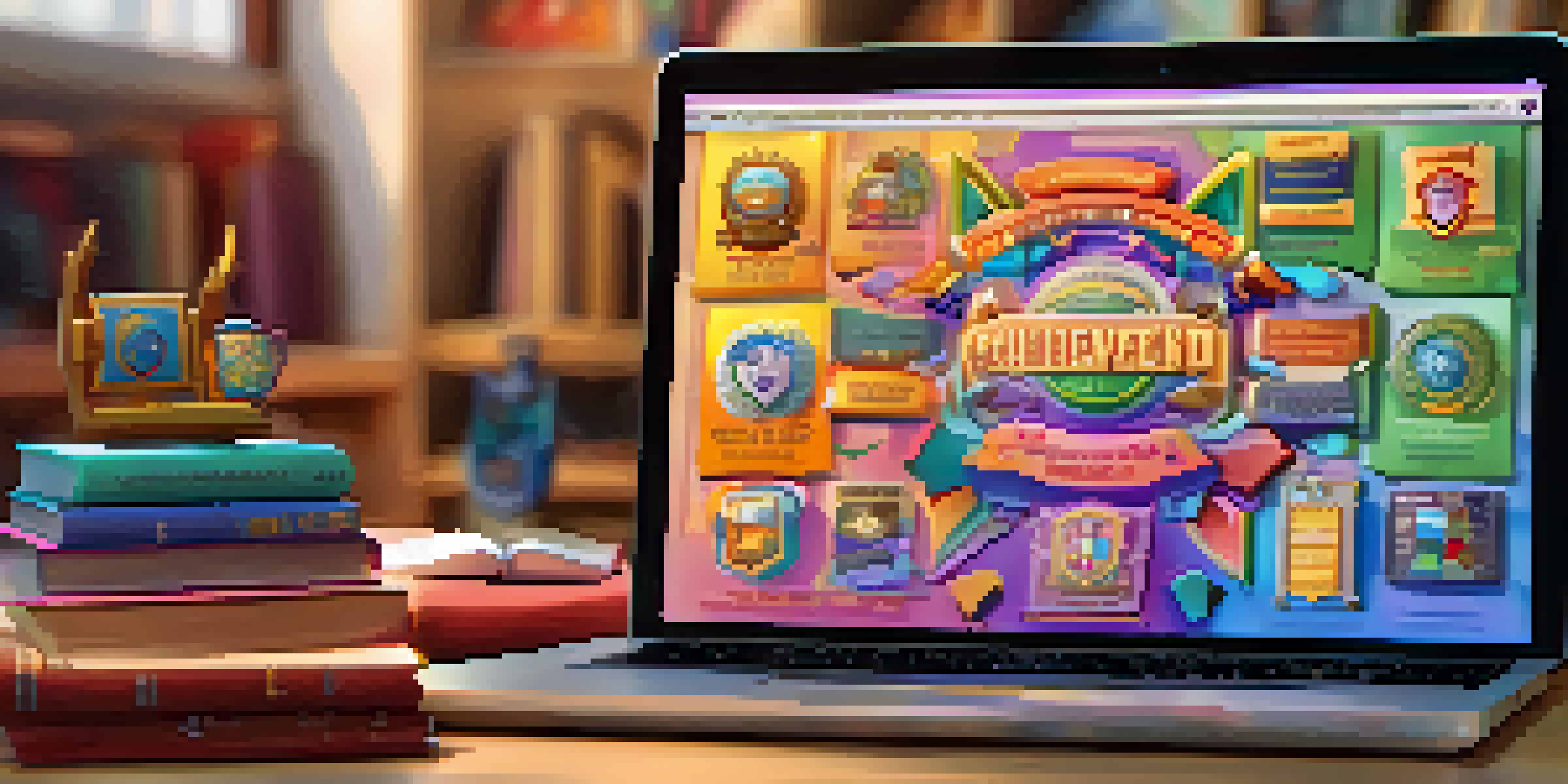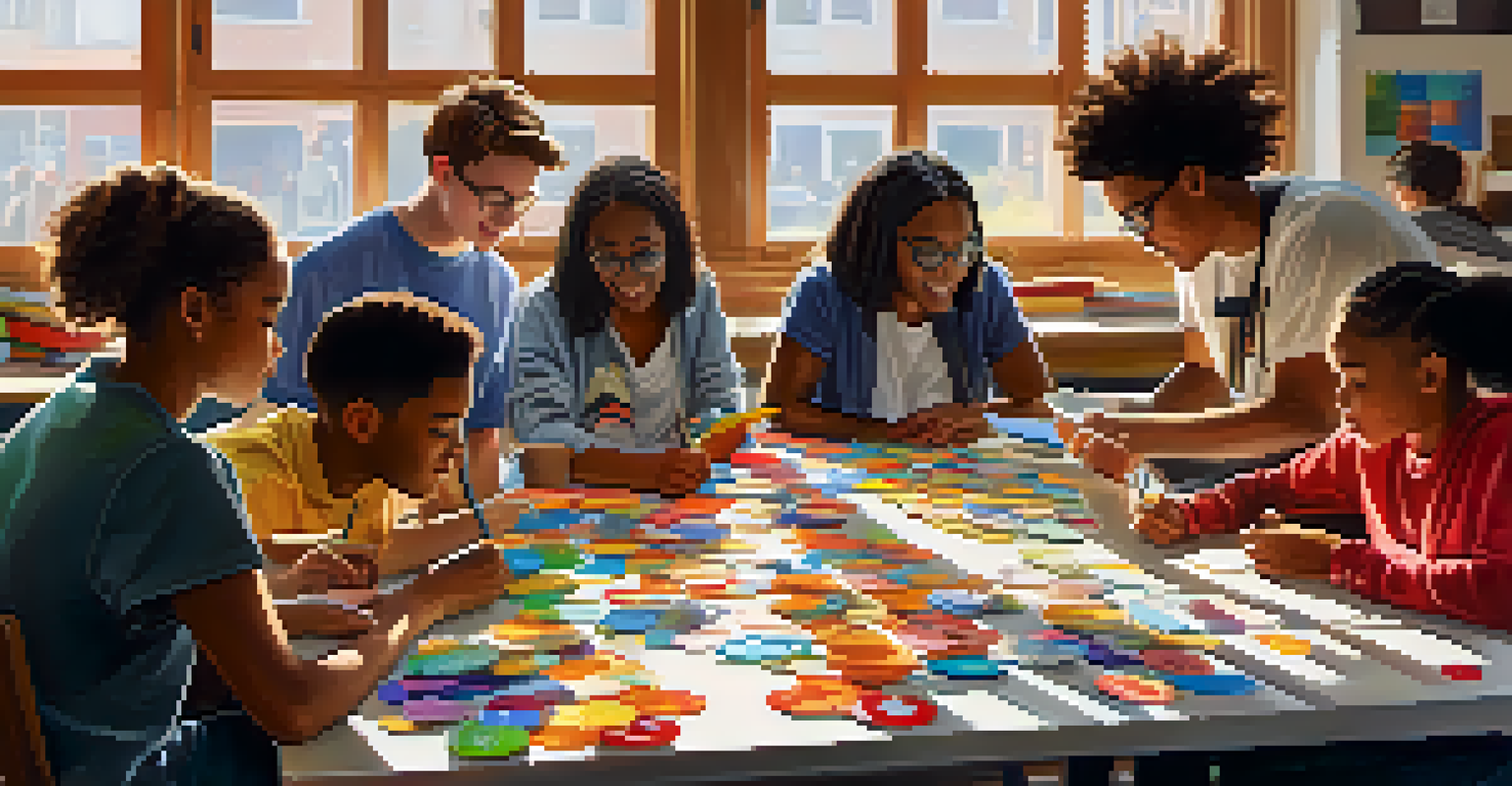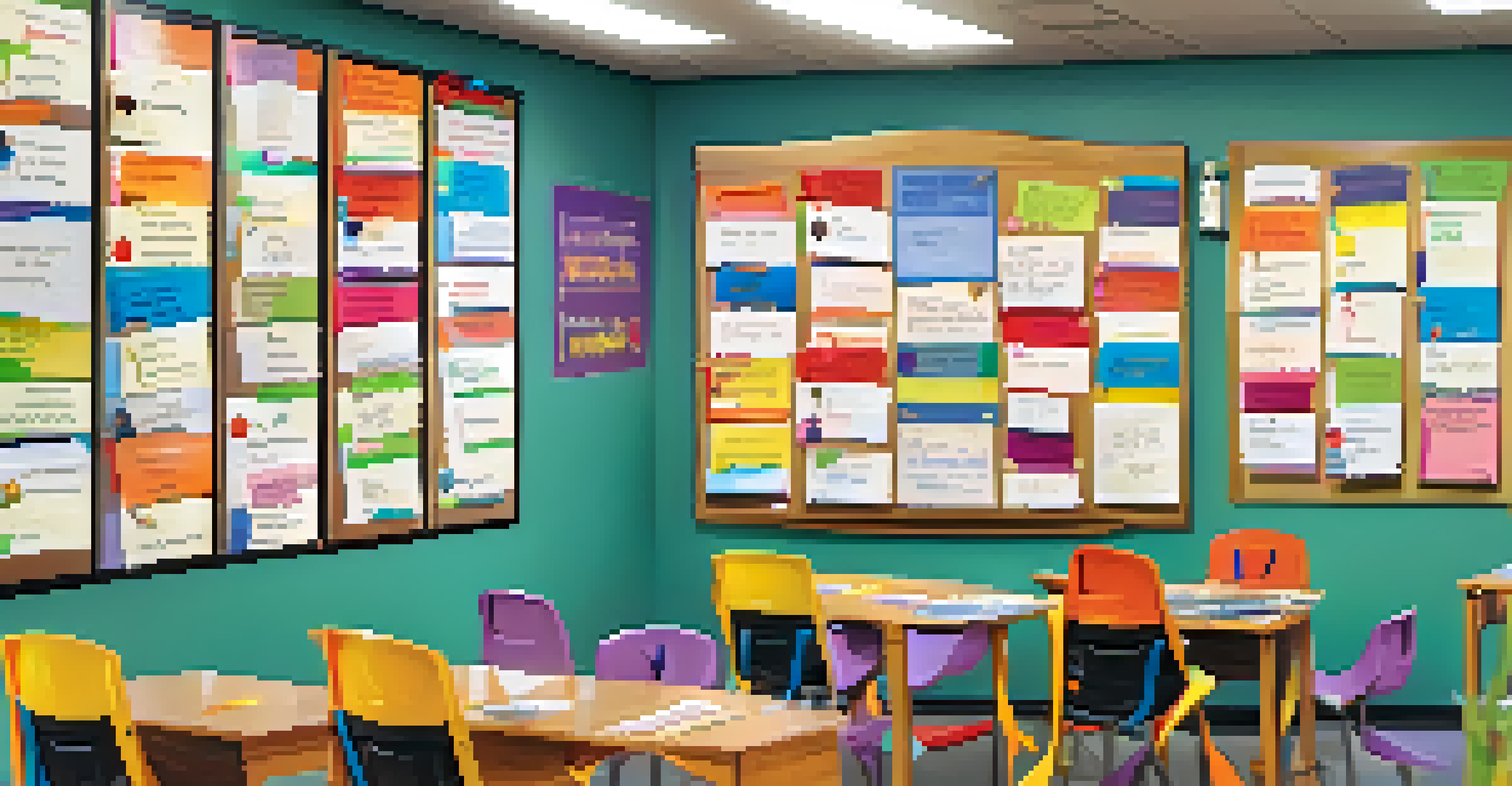Using Open Badges to Enhance Student Engagement

What Are Open Badges and How Do They Work?
Open Badges are digital credentials that recognize skills and achievements. They are not just a simple certificate; they contain metadata that explains what was earned and how. This transparency makes them more meaningful for students, as they can showcase their accomplishments in a detailed way.
The greatest danger in times of turbulence is not the turbulence; it is to act with yesterday's logic.
Imagine earning a badge for completing a challenging project or mastering a new skill. Each badge tells a story about your journey and growth, making it easier for students to demonstrate their learning beyond traditional grades. This story aspect can be a powerful motivator for students to pursue their interests further.
Moreover, Open Badges are portable and interoperable, meaning they can be shared across various platforms. Students can display them on their personal websites, LinkedIn profiles, or digital portfolios. This flexibility allows students to curate their achievements, enhancing their visibility in academic and professional settings.
Boosting Motivation Through Recognition
One of the key benefits of Open Badges is their ability to boost student motivation. When students receive recognition for their efforts, it encourages them to engage more deeply with their learning. This intrinsic motivation often leads to higher levels of participation and enthusiasm in academic activities.

Think of it like earning points in a video game. Each badge acts like a level-up, pushing students to strive for more and continually improve. This gamification element can make learning feel more like an exciting challenge rather than a chore.
Open Badges Enhance Learning
Open Badges are digital credentials that recognize skills and achievements, providing students with a meaningful way to showcase their learning journey.
Additionally, the visual appeal of badges can enhance their impact. Students are often proud to display their badges, creating a sense of accomplishment that can inspire their peers. This peer recognition fosters a positive learning environment where students motivate each other.
Fostering a Growth Mindset with Badges
Open Badges promote a growth mindset by emphasizing progress over perfection. Instead of only focusing on final grades, badges highlight the milestones along the way. This approach encourages students to value their learning journey and embrace challenges as opportunities for growth.
Learning is not the product of teaching. Learning is the product of the activity of learners.
For instance, a student might earn a badge for completing a difficult assignment or collaborating effectively with teammates. Each badge serves as a reminder that effort and persistence lead to success, reinforcing the idea that abilities can improve with practice.
This mindset shift can be transformative, especially for students who may feel discouraged by traditional assessment methods. By celebrating incremental achievements, Open Badges help students build confidence in their abilities, equipping them to tackle future challenges with resilience.
Enhancing Collaboration Through Badges
Open Badges can significantly enhance collaboration among students. By earning badges for group projects or teamwork, students learn the value of working together towards common goals. This collective achievement fosters a sense of camaraderie and shared responsibility.
Imagine a group of students working on a community service project. If they each earn badges for their contributions, it not only acknowledges individual efforts but also highlights the importance of collaboration. This recognition can strengthen team dynamics and encourage students to support one another.
Boosting Motivation through Recognition
Open Badges increase student motivation by recognizing efforts, much like earning points in a video game, which encourages deeper engagement in learning.
Moreover, the process of earning badges can spark meaningful conversations about collaboration strategies. Students can reflect on what worked well and what could be improved, leading to valuable lessons that they can apply in future group settings.
Personalizing Learning Experiences with Badges
Open Badges allow for personalized learning experiences tailored to individual student needs. Educators can design badges that align with various learning styles and interests, giving students the freedom to choose how they demonstrate their skills. This personalization can make learning feel more relevant and engaging.
For example, a student interested in coding might earn badges for completing online tutorials or participating in coding competitions. By focusing on their unique interests, students are more likely to be invested in their learning and pursue knowledge that resonates with them.
Additionally, personalized badges can help educators identify areas where students may need more support. By analyzing badge data, teachers can gain insights into individual progress, enabling them to provide targeted assistance that enhances learning outcomes.
Building a Culture of Achievement and Recognition
Implementing Open Badges in educational settings can contribute to a culture of achievement and recognition. When schools adopt badge systems, they send a clear message that every effort counts and should be celebrated. This cultural shift can lead to increased student engagement and a positive learning atmosphere.
Consider a classroom where students regularly share their badges during discussions. This practice not only highlights individual accomplishments but also inspires others to pursue their goals. As students recognize their peers' achievements, a supportive community of learners begins to flourish.
Fostering Collaboration and Growth
By earning badges for teamwork and progress, students learn the importance of collaboration and develop a growth mindset, valuing their learning journey.
Furthermore, a culture of recognition can extend beyond the classroom. Schools can showcase student achievements at events, in newsletters, or on social media, fostering a sense of pride within the community. This recognition not only motivates students but also reinforces the value of learning and personal growth.
The Future of Open Badges in Education
The future of Open Badges in education looks promising as more institutions recognize their potential to engage students. With advancements in technology, integrating badge systems into learning management platforms becomes easier, making them accessible to educators and learners alike. This accessibility can help standardize badge implementation across various educational settings.
As the demand for skills-based recognition continues to grow, Open Badges may become a staple in educational frameworks. They offer a way for students to showcase not just what they know, but how they can apply their knowledge in real-world scenarios. This shift aligns well with the evolving job market, where employers increasingly value practical skills.

Ultimately, the integration of Open Badges into educational practices can lead to a more holistic view of student achievement. By focusing on skills development and lifelong learning, badges can empower students to take ownership of their education, preparing them for future success in both academic and professional endeavors.